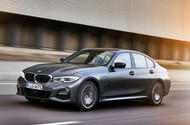Quick and sophisticated, it makes a serious case for plug-in hybrids, and maintains the model’s reputation for class-leading excellence – though not without some sacrifice
Take two otherwise identical versions of any given car and the conventionally powered model will out-handle the hybrid.This applies as much to supercars as it does to a supermini. Add a battery pack and you have a heavier car with greater inertia and fractionally delayed responses – plus the need to manage the additional mass with higher spring rates for the suspension, and so on. People who really enjoy driving therefore tend towards whichever pure petrol or diesel version strikes the best balance of performance, refinement and economy for their tastes and budget.Which brings us to the new BMW 330e: an unapologetic plug-in hybrid whose maker cannot afford not to build and yet, as a 3 Series, ought to put handling on a pedestal. We’ll come to that in a moment, butelsewhere the 330e looks impressive. At £37,875 in SE trim (rising to £39,075 for the M Sport version driven here) it costs roughly the same as the 330i four-cylinder petrol but gives away just 0.2sec in the sprint to 62mph, despite weighing roughly 200kg more thanks to the hybrid hardware.With carbon dioxide emissions of only 39g/km, company car drivers will also pay only half as much benefit in kind, and BMW has upped the battery capacity for this second attempt at a plug-in hybrid 3 Series from 7.6kWh to 12kWh, so the electric driving range increases from 25 to 41 miles – even on the stricter new WLTP regime. The new car can also hit 68mph in electric mode – a useful increase from 50mph in the original 330e of 2015, though still a sure-fire way to drain the battery in double-time.In fact, in the context of specification, it seems the only real trade-off against the 330i in daily use concerns boot space, where the 330e sacrifices just over 100 litres to make way for the repositioned fuel tank. With 375 litres, there’s less space than you’ll find in a 2 Series.
Source: Autocar
